http://www.defenseone.com/technolog...wn-north-korean-missiles/145939/?oref=d-riverOne of the smaller line items in the Missile Defense Agency’s $9.9 billion budget request for 2019 is also one of the most interesting: $66 million to keep developing a laser that can be mounted on a drone and used to destroy enemy missiles on the launch pad — or shortly after takeoff.
That amount includes $61 million to continue the laser-on-a-drone program, called the Low Power Laser Demonstrator, or LPLD, and $5 million to scale up its laser to sufficient destructive power.
Why does a low-power laser cost $61 million but scaling it up to sufficient power only cost $5 million? The answer lies in recent innovations in solid-state fiber lasers. Unlike highly volatile chemical lasers or less powerful solid-state bulk lasers, solid-state fiber lasers use the same sort of fiber-optic technology that forms the backbone of the information economy. Adding more power has become a matter of just adding more fiber.
Last fall, Lockheed Martin, Boeing, and General Atomics all received contracts for the program’s first phase; each will present its own solution to the Pentagon in the months ahead. The military will pick one winner to continue; the goal is to have somethin
Install the app
How to install the app on iOS
Follow along with the video below to see how to install our site as a web app on your home screen.
Note: This feature may not be available in some browsers.
You are using an out of date browser. It may not display this or other websites correctly.
You should upgrade or use an alternative browser.
You should upgrade or use an alternative browser.
Energia-aseet: laser ym.
- Viestiketjun aloittaja Umkhonto
- Aloitus PVM
http://www.spacedaily.com/reports/Advances_in_lasers_get_to_the_long_and_short_of_it_999.htmlSince lasers were first developed, the demand for more adaptable lasers has only increased. Chiral nematic liquid crystals (CLCs) are an emerging class of lasing devices that are poised to shape how lasers are used in the future because of their low thresholds, ease of fabrication, and ability to be tuned across wider swaths of the electromagnetic spectrum. New work on how to select band-edge modes in these devices, which determine the lasing energy, may shine light on how lasers of the future will be tuned.
The laser cavities are formed of a chiral nematic liquid crystal doped with a fluorescent dye. The liquid crystal creates a photonic bandgap in the laser cavity. An international team of researchers demonstrated a technique that allows the laser to electrically switch emission between the long- and short-wavelength edges of the photonic bandgap simply by applying a voltage of 20 V. They report their work this week in Applied Physics Letters, from AIP Publishing.
http://www.spacedaily.com/reports/T...first_of_its_kind_laser_breakthrough_999.htmlA team of optics researchers from the University of Central Florida has demonstrated the first-ever nonmagnetic topological insulator laser, a finding that has the potential to substantially improve the efficiency, beam quality, and resilience of semiconductor laser arrays.
These results are presented in two research papers, one describing the theory of topological lasers and the other experiments, published in Science.
The project, led by Professors Mercedeh Khajavikhan and Demetrios Christodoulides of the College of Optics and Photonics (CREOL) and their graduate students Steffen Wittek, Midya Parto and Jinhan Ren, was conducted in conjunction with a team from Technion - Israel that includes Moti Segev, Miguel Bandres, and Gal Harari. The theoretical component of the work was initiated by the Technion team, while the experimental part was carried out at CREOL.
The teams were interested in solving a long-standing problem in laser physics that perplexed scientists for the past 40 years: how to create a high-power, ultimately focusable, and single frequency semiconductor laser array that does not lose efficiency even when its sub-elements fail or malfunction. Such a laser is expected to find applications in numerous areas of science and technology. The answer to this problem came from a rather unexpected place.
"We were inspired by the developments in topological insulator materials," said Christodoulides.
"It was less than two years ago that the Nobel Prize in Physics was awarded to the theoretical physicists whose work established the role of topology in understanding these exotic forms of matter."
Topological insulators are one of the most innovative and promising areas of physics in recent years, providing new insight into the basic understanding of protected transport. These are special materials that conduct a "super-current" on their surface while being insulators in their interior. The current on the surface is not affected by defects, sharp corners or disorder; it continues unidirectionally without being scattered.
Two years ago, the team wondered if there could be a way to utilize notions from topological science into laser physics. This could lead to altogether new families of lasers with improved performance characteristics.
The team decided to build a topological insulator for photons. However, this is a rather challenging task since photons, unlike electrons, do not have a charge. Moreover, magnetic fields do not substantially affect semiconductor light emitting materials.
"To solve these problems, we came up with clever designs to trick photons to feel as if they are experiencing a magnetic field and having a spin," said Khajavikhan, the lead experimentalist.
The team used an array of microring resonators that are arranged in such a way to mimic the presence of a magnetic field. By pumping only the rings on the periphery of the array, they excited the laser to emit in the topological edge mode. This mode, traveling along the edge, can most efficiently use all the available pump power to generate a coherent, single-mode, high power beam.
The study leads to a new class of active topological photonic devices that could be readily integrated with sensors, antennas and other photonic devices. The work demonstrated that not only are topological insulator lasers theoretically possible and experimentally feasible, but also marked the first practical application using such topological principles in optics.
"There is a great pleasure to see how a line of fundamental research can address such tangible and practical problems," Christodoulides said.
http://www.defenseone.com/technolog...-lasers-shoot-satellites/146243/?oref=d-riverRussian defense companies have created a plane-mounted laser that can hit satellites — at least according to an anonymous source quoted by Russian news agency Interfax. On Saturday, an Interfax report cited the source as saying that weapons maker Almaz-Antey has “completed work on the anti-satellite complex,” which includes the laser and associated ground control gear.
Independent and Western observers have not yet verified the claim. But the Russian program does exist. Last April, Almaz-Antey general designer Pavel Sozinov told Russian news agency Ria Novosti that Russian leadership had ordered the company to develop weapons that could interfere electronically with or achieve “direct functional destruction of those elements deployed in orbit.”
The program builds off the Soviet-era Beriev A-60, a gas laser fitted inside a heavily modified Ilyushin Il-76MD cargo plane. The effort also bears some resemblance to the Soviets’ 1984 Kontakt 30P6 program, which sought to modify a MiG-31D to draw targeting data from the Krona-N space and satellite observation complex and shoot down an enemy satellite with a 79M6 Kontakt missile.
The new laser will be fitted aboard a brand-new, as-yet-unnamed aircraft, as part of a new anti-satellite “complex” that will likely involve ground and radar elements as well, Interfax reported.
Samuel Bendett, a research analyst at the Center for Naval Analyses, said, “Russia considers American satellites a significant threat when it comes to potential confrontation, and is actively working to counter U.S. technologies in space, such as possible electronic warfare technologies that can target hundreds of kilometers up. The developments in laser technologies are in step with U.S. and Chinese advancements in this area.”
U.S. defense officials are increasingly concerned about anti-satellite weapons. “We assess that Russia and China perceive a need to offset any U.S. military advantage derived from military, civil, or commercial space systems and are increasingly considering attacks against satellite systems as part of their future warfare doctrine,” Dan Coats, who directs the director of the Office of National Intelligence, told lawmakers last May.
A Joint Staff report obtained by the Washington Free Beacon in January, predicted that Russia or China would be able to destroy U.S. satellites within a decade.
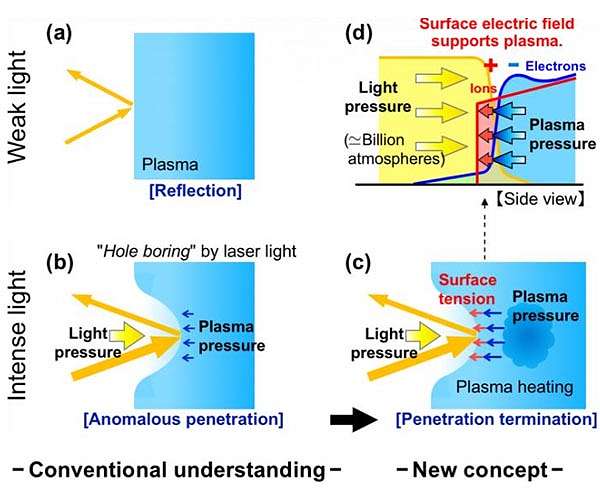
http://www.spacedaily.com/reports/S...er_light_on_the_plasma_density_limit_999.htmlThe interaction of high-power laser light sources with matter has given rise to numerous applications including; fast ion acceleration; intense X-ray, gamma-ray, positron and neutron generation; and fast-ignition-based laser fusion. These applications require an understanding of energy absorption and momentum transfer from the high-intensity lasers to plasma particles.
A group of Japanese researchers led by Osaka University has proposed that substances heated with high-power lasers produce an ultrahigh pressure plasma state, comparable with those found at the centers of stars, and that the surface tension of the plasma can push back light. Since lasers with energies capable of heating material sufficiently to create this pressure had not been available to date, the process had not been considered. Their work published in Nature Communications describes their theory and supporting simulations.
"Understanding extreme high pressure states created by laser light interacting with materials is crucial for laser-based applications," co-author Yasuhiko Sentoku says. "Our theory proposes that steepening of surface plasma by intense laser, i.e., hole boring, is stopped eventually by ultrahigh plasma pressure, and a new stage of plasma heating appears."
They derived the limit density for laser hole boring, which corresponds to the maximum plasma density laser light can reach. They found that after reaching the density limit, the surface plasma starts to blowout towards the laser, even if the laser irradiates the plasma continuously.
The researchers' theory explains the transition to blowout in terms of a balance relationship between the pressure of the laser light and that of the surface plasma. The theory provides a guideline in controlling electron energy which is important for applications such as ion acceleration and pair plasma creation.
"We also derived the time scale for the transition from hole boring to blowout, showing that our findings will be applicable for multi-picosecond laser experiments," lead author Natsumi Iwata says. "We hope our work will provide a grounding for application focused research, for example laser initiated nuclear fusion."
http://dx.doi.org/10.1038/s41467-018-02829-5
https://spectrum.ieee.org/tech-talk...rtin-develops-helios-laser-weapon-for-us-navyThe other new laser built by Lockheed will be shipped to the White Sands Missile Range for extensive testing. The Lockheed contract includes options worth up to $942.8 million for training, maintenance, support, and additional lasers.
Electrically powered laser weapons have come a long way from the first bulk solid-state system that generated 100 kilowatts for five solid minutes in a Northrop Grumman laboratory nine years ago. To make the Navy LaWS, the Office of Naval Research bolted together six 5.5-kW industrial lasers.
To produce the higher power and more tightly focused beam needed to zap targets a kilometer or more away, Lockheed uses a technique called spectral beam combination. It blends the outputs of many fiber lasers emitting light at slightly different wavelengths.
The company first combined the 300-watt beams from 96 separate lasers to generate a single 30-kilowatt beam. Then, they built a 60-kilowatt versionthat they delivered last year to the Army Space and Missile Defense Systems Command in Huntsville, Ala. to install on a military truck.
Last year, Lockheed also landed a contract to build a pod-based laser weapon to test on a plane. Now, they will build two more brand new systems for the Navy.
Details differ between systems because each is customized to fit different spaces and meet other requirements. But Afzal says, "The system is scalable. We can't give you numbers, but the capabilities will continue to grow."
Miksi harrastelija vehkeissä konkkapankki on aseessa kiinni ja valtiollisten vehkeissä erillisenä konttina taikka kahtena? Tuntuu myös että nuo standardi suurkapasiteetti konkat eivät ole tarpeeksi nopeita lataamaan taikka työntämään virtaa kiskoille. Superkonkilla asia voisi olla paremmassa kunnossa, mutta kaupallisesti niitä on nihkeästi markkinoilla.
Viimeksi muokattu:
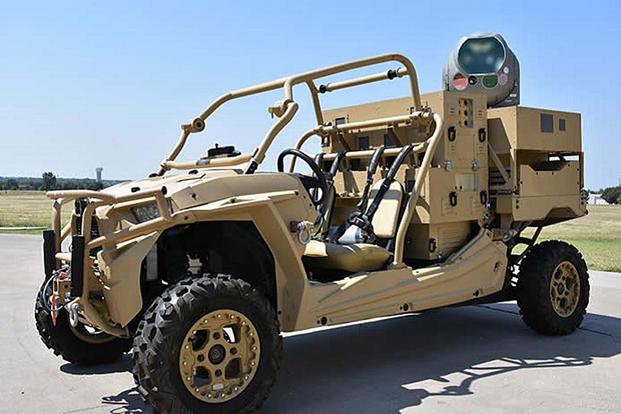
https://www.military.com/defensetec...ser-dune-buggy-set-fry-enemy-quadcopters.htmlIt may look like R2-D2 from Star Wars slapped on top of a dune buggy, but Raytheon says its new laser weapon holds the promise of providing maneuver formations with portable air defenses against drones.
"This can identify a quadcopter out to five clicks," or 5,000 meters, and then fry it with a laser, said Evan Hunt, business development lead for high-energy lasers at Raytheon.
Hunt spoke as he stood in the Pentagon's courtyard Monday in front of a Mad Max-style Polaris off-road vehicle mounted with a Raytheon Multi-Spectral Targeting System, a combination of electro-optical and infrared sensors with a high-energy laser (HEL).
The system can operate remotely or as part of an integrated air defense network, he said.
"You can park it at the end of a runway or at a [forward operating base]," Hunt said.
But one of its main advantages, he said, is that the laser can be carried by an off-road vehicle with maneuver formations to provide defense against unmanned aerial systems, or drones.
"Basically, we're putting a laser on a dune buggy to knock drones out of the sky," Dr. Ben Allison, director of Raytheon's high-energy laser product line, said in a company release.
https://arstechnica.com/tech-policy...se-lasers-to-create-shouting-will-o-the-wisp/The Department of Defense's Joint Non-Lethal Weapons Development Program (JNLWD) is closing in on a directed energy weapon that can literally tell people to go away—creating sound waves with laser pulses that can annoy, frighten, or otherwise send the message to people approaching a military unit that getting closer is not a good idea.
The Non-Lethal Laser-Induced Plasma Effect (NL-LIPE) system can be used to manipulate air molecules, creating a ball of plasma that oscillates to create sound waves with a stream of femtosecond-long laser bursts. A first laser creates the plasma ball, and a second then oscillates the plasma ball to create the sound. As Defense One's Patrick Tucker reports, the current Laser-Induced Plasma Effect implementation can only manage an indistinguishable mumble—though it can create a wide variety of very distinguishable sounds, as demonstrated in the video below.
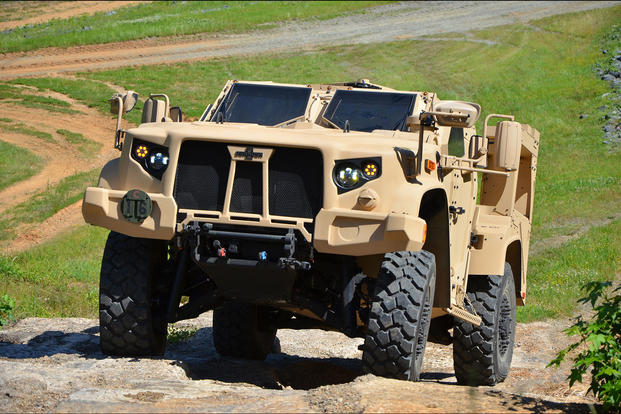
JLTV
https://www.military.com/defensetec...tv-air-defense-system-armed-laser-weapon.htmlThe Marine Corps is putting together a new, mobile air-defense weapon system that's mounted on a Joint Light Tactical Vehicle and could be armed with lasers to bring down enemy threats from above.
Marine Lt. Gen. Robert Walsh, deputy commandant for combat development and integration, talked about the Ground Based Air Defense Future Weapon System at a hearing Tuesday before the Senate Armed Services Committee's subcommittee on seapower.
Lawmakers are worried that the U.S. military's ground forces do not have modern air-defense systems capable of defeating aerial threats from adversaries such as Russia and China.
"Ground forces have not experienced enemy [air] attacks since the Korean War; however, I am concerned that manned and unmanned aircraft, rockets, artillery and missiles pose an increasing danger to Marine units and installations worldwide," said subcommittee chair Sen. Roger Wicker, R-Mississippi. "The Marine Corps has not updated its air-defense capability since the early 1990s."
Air defense is a key priority for the Corps as well as the Army, and Wicker made a point of stressing that neither service should be tackling this problem alone.
"I understand that the Army faces many of the same challenges," he said. "This subcommittee believes that the two services should work together to meet similar requirements."
https://www.military.com/defensetec...-service-field-laser-weapons-expert-says.htmlIf one service has made sufficient progress to use laser weapons in its arsenal in the next few years, it's the U.S. Navy, according to the former director of the Missile Defense Agency.
"The Navy right now is the most forward-leaning because they're the only service that has actually fielded an operational prototype weapon, the Laser Weapon System that they put on the USS Ponce," said Trey Obering, an executive vice president at consulting firm Booz Allen Hamilton who leads the directed energy innovation team.
Military.com spoke with Obering, a former Air Force lieutenant general, fighter pilot and NASA space shuttle engineer, in the midst of this week's Directed Energy Summit hosted by Booz Allen Hamilton and the Center for Strategic and Budgetary Assessments.
Getting the laser in the hands of sailors to survey how and when they would use the LaWS was critical to making laser weapons a reality in wartime missions, Obering argued. The Air Force and Army have struggled to do so.
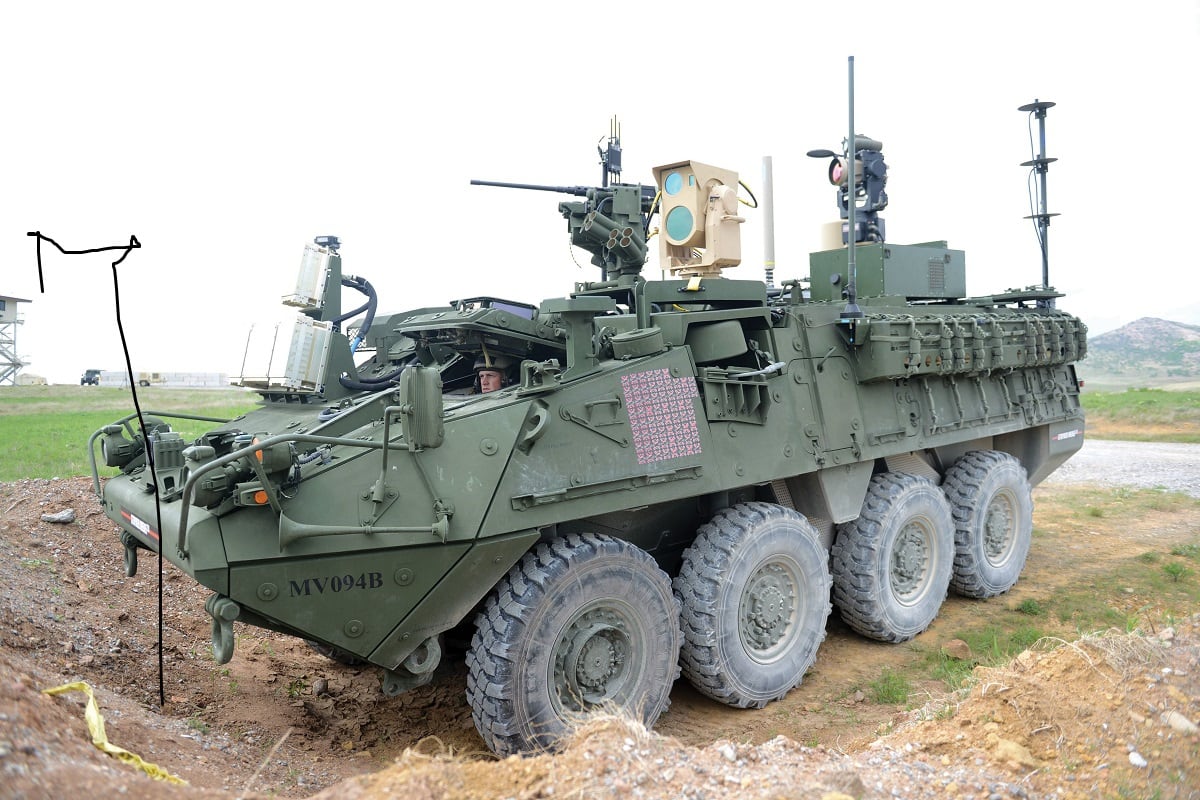
MEHELllä varustettu stryker
https://www.defensenews.com/land/20...ully-demos-laser-weapon-on-stryker-in-europe/The U.S. Army successfully demonstrated a laser weapon integrated onto a Stryker combat vehicle in Europe over the weekend, but the service acknowledges range limitations there are holding back exercising its full capability and training.
Col. Dennis Wille, the Army G-3 strategic program chief for U.S. Army Europe, told an audience March 21 at the Booz Allen Hamilton Directed Energy Summit in Washington, that over the weekend the 2nd Stryker Cavalry Regiment supported by the 7th Army Training Command and the Fires Center of Excellence at Fort Sill, Oklahoma, conducted a live-fire engagement of the 5-kilowatt Mobile Expeditionary High Energy Laser (MEHEL) demonstrator at the Grafenwoehr Training Area in Germany.
“The 2nd Cavalry troops successfully engaged a dozen commercial-off-the-shelf drones during this live event and all members of the team, from operators to acquisition, learned many valuable insights into how to conduct this training,” Wille said.

https://spectrum.ieee.org/aerospace/military/fiber-lasers-mean-ray-guns-are-comingThe Pentagon has been dazzled by visions of laser weapons since physicist Gordon Gould walked into the then months-old Advanced Research Projects Agency in 1959 with a proposal to build a laser. Gould, one of three people credited with conceiving the laser, had gotten the idea of generating coherent light as a 37-year-old grad student at Columbia University in late 1957. Within weeks of his inspiration, he had sketched out his vision of a pair of mirrors at opposite ends of a long, thin cylinder. Chain smoking over a pile of references and a notebook at his kitchen table, he realized the laser could concentrate light into a powerful beam. Once he worked out the laser idea, Gould abandoned his Ph.D. studies and set out to patent his invention, eventually enlisting the help of TRG, the company where he started working in early 1958.
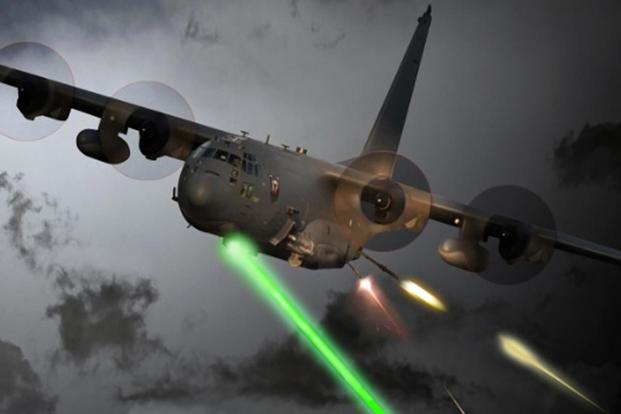
https://www.military.com/defensetec...l-ops-short-funding-ac-130-gunship-laser.htmlThe Air Force is short of funding to speed development of a laser weapon for what is already one of the most lethal platforms in the U.S. arsenal -- the Special Operations AC-130J Ghostrider gunship, Air Force Lt. Gen. Marshall Webb testified Wednesday.
"We're $58 million short of having a full program that would get us a 60-kilowatt laser flying on an AC-130 by 2022," Webb, commander of Air Force Special Operations Command, said at a hearing of the Senate Armed Services Subcommittee on Emerging threats.
Webb was responding to questions from Sen. Martin Heinrich, D-New Mexico, who said at the current pace of testing and funding, a laser weapon for the AC-130 would not be operational until 2030.
"I'm quite concerned with the crawl-walk-run approach when I think we're reaching a point in the technology where we could literally jump from crawl to run" on the laser weapon, Heinrich said.
Heinrich said the current plan called for progressive demonstration steps in moving from a four-kilowatt laser to a 30-kilowatt version, "which really isn't operationally relevant."
If the previous steps were successful, the Air Force would then move to a 60-kilowatt device and "at that rate the system would not be fieldable until 2030," Heinrich said.
"What's wrong with skipping the 30-kilowatt demo entirely and moving to something that could be used in the field?"
Mitä mahtaa 30 kW tehdä ihmiskehossa verrattuna 60kW laseriin?
https://www.defenseone.com/technolo...y-gun-stop-truck-attacks/147702/?oref=d-riverThe van driver who killed 10 Toronto pedestrians on Monday showed that a terror technique that ISIS pioneered in Iraq and Syria in 2015 remains terrifyingly effective against unsuspecting urban populations. But the U.S. military is working on a new weapon to stop vehicle-born terrorist threats, one that could help police departments as well.
The Defense Department’s Joint Non-Lethal Weapons Program, or JNLWD, is pushing ahead with a new direct energy weapon that uses high-powered microwaves to stop cars in their tracks without damaging the vehicle, its driver, or anyone else.
The jammer works by targeting the car’s engine control unit causing it to reboot over and over, stalling the engine. Like an invisible hand, the microwaves hold the car in place. “Anything that has electronics on it, these high-powered microwaves will affect,” David Law, who leads JNLWD’s technology division, said in March. “As long as the [radio] is on, it holds the vehicle stopped.”
https://arstechnica.com/tech-policy...n-hit-many-times-by-lasers-probably-by-china/US military pilots operating from an American base in the nation of Djibouti, in the Horn of Africa, have been reporting recent incidents of "laser strikes" believed to be coming from a Chinese military base just eight miles away.
A recent "Notice to Airmen" (NOTAM) cautioned of "unauthorized laser activity," adding that there had been "multiple lazing events involving a high-power laser" near the Chinese base.
The Camp Lemonnier base at the Djibouti International Airport hosts military bases from several nations, including France and Japan. Approximately 4,000 Americans are stationed there, many of whom are involved in counterterrorism and drone operations. China's base opened in August 2017.
Civilian pilots in the United States and around the world have dealt with similar situations for years. In the US, hitting an aircraft with a laser is a federal crime.
As Ars has reported for years, federal authorities take such laser strikes very seriously and prosecute cases whenever they can. The Department of Justice told Ars that more than 28,000 laser illumination incidents in the United States have been reported to the Federal Aviation Administration between 2011 and 2015. But as of 2014, only 134 arrests were made, with 80 resulting convictions.
As of October 22, 2016, the FAA reported 5,564 incidents nationwide for 2016. That's more than 22 laser strikes reported in the United States every day.
Lawmakers and aviation officials have been concerned that increasingly powerful lasers could be used against a plane to blind a pilot and bring an aircraft crashing down. While no aircraft in American airspace has ever been brought down (or forced to make an emergency landing), there has been a concerted effort to identify and crack down on those carrying out such strikes.
"I don't know of crashes, but I do know of pilots that have suffered permanent disabilities from laser strikes," Karen Escobar, a Fresno, California-based federal prosecutor who has likely brought more laser cases than anyone, told Ars in 2016.
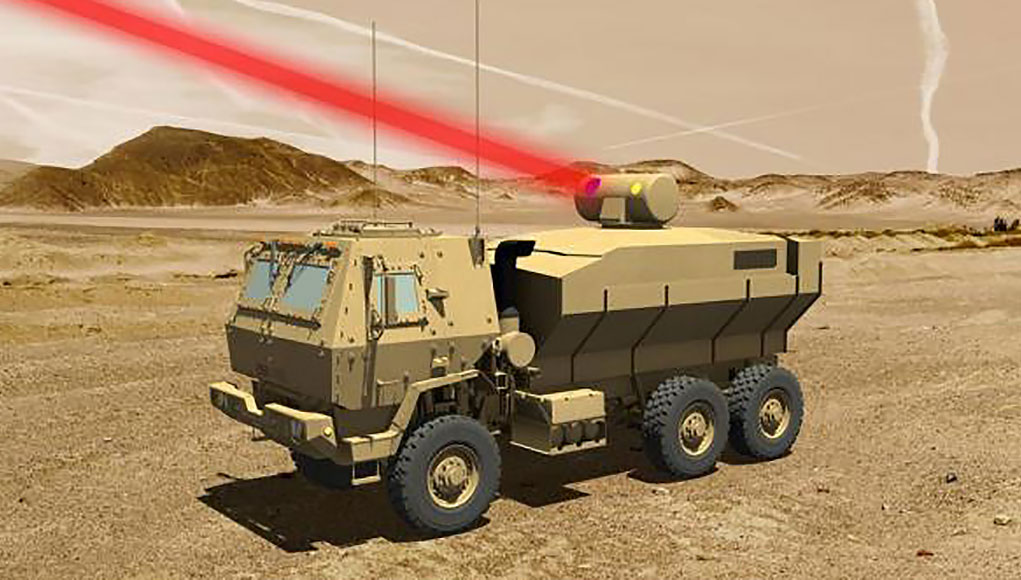
https://defense-update.com/20180702_hel-tvd.htmlRaytheon Company is developing a 100 kW class laser weapon system under a $10 million U.S. Army’s High Energy Laser Tactical Vehicle Demonstration (HEL TVD) program contract. The preliminary design will be integrated for demonstration onboard a military Family of Medium Tactical Vehicles (FMTV) truck. The science and technology demonstration program is part of the Army’s Indirect Fire Protection Capability (IFPC) Increment 2 Block 2 (IFPC 2-I Blk 2) initiative designed to defeat drones, rockets, artillery, and mortars (C-RAM/UAS).
The Army’s Indirect Fire Protection Capability, Increment 2 — Intercept (IFPC Inc 2-I) is an acquisition program designed to provide a material solution to protect troops from cruise missiles, unmanned aerial systems (UAS), and rockets, artillery, and mortars (RAM). IFPC Inc 2-I has a Block 2 milestone decision in FY24 to add the counter-RAM capability to the program. To date, the program tested lasers at various intensities, from 2kW to 50 kW. In February this year, Lockheed Martin announced it completed the development of a single-beam 60 kW laser for the program. The 100 kW laser will be based on multi-beam fiber-laser design. The next phase will test the system with 100kW lasers, deemed adequate to defeat C-RAM targets in a timely manner.
Following the conclusion of the test and evaluation phase in early 2019 the Army plans to award a three-year system development, and demonstration contract estimated at $130 million, to build and integrate a weapon system. By the Fiscal year 2022, the HEL TVD will be demonstrated against a variety of targets, including lethal engagements.
This capability is managed in parallel to the Interim Mobile-SHORAD (IM-SHORAD) that will equip the Stryker brigades beginning 2020, but the two programs could be merges sometime in the future as the Army considers adding HEL capability to IM-SHORAD in the future.
The first mission is to protect U.S. and allied forces at fixed and semi-fixed bases. High energy lasers will complement conventional offensive and defensive weapons at a significantly lower cost per engagement than current systems. The high energy laser system represents very low operating costs, as it requires only fuel to complete its mission, with an average cost per kill of approximately $30. There is no ordnance logistics burden, as with conventional weapons.
Vihdoikin jotakin hintoja näille aseille. Alle 10 miljoonaa taalaa per asejärjestelmä kuulostaa hieman kalliilta tällä hetkellä. Mutta sen jälkeen ei tarvitse maksaa ammuksia. Odotan tuon hinnan putoavan 3 - 5 miljoonan tienoille ensi vuosikymmenellä.
Nojatuolistrategi
Ylipäällikkö
Tupakan kaukosytytin.

https://www.hs.fi/ulkomaat/art-2000005742050.html

Kiinalainen teknologiayhtiö on kehittänyt poliisille tarkoitetun aseen, jolla voi sytyttää esimerkiksi mielenosoittajien banderollit lähes kilometrin etäisyydellä lasersäteen avulla, kertoivat uutistoimistot.
”Kukaan ei voi tietää, mistä isku tulee, vaan teko näyttää onnettomuudelta”, kertoi yksi aseen kehittäjistä South China Morning Posthttp://www.scmp.com/news/china/diplomacy-defence/article/2153310/china-brings-star-wars-life-laser-ak-47-could-set-fire -lehden mukaan.
https://www.hs.fi/ulkomaat/art-2000005742050.html
Leaderwolf
Respected Leader
Raytheon laser technology makes US patent history
Geoff Fein, Washington, DC - Jane's International Defence Review
11 July 2018
Raytheon has received a US patent for technology to obtain real-time readings on speed and distance from the data stream created by laser radars. The patent marks the 10 millionth US patent issued.
The technology, invented by Joe Marron, an optical engineer for Raytheon, improves the ability of laser radars to identify and track objects. Laser radars use reflected light to measure speed and distance.
“This invention allows us to measure the amplitude and phase of light, and it is particularly useful with laser systems,” Morton told Jane’s . “By measuring the amplitude and phase, we can infer speed and distance, and that is very useful for many current applications.”
http://www.janes.com/article/81668/raytheon-laser-technology-makes-us-patent-history
Geoff Fein, Washington, DC - Jane's International Defence Review
11 July 2018
Raytheon has received a US patent for technology to obtain real-time readings on speed and distance from the data stream created by laser radars. The patent marks the 10 millionth US patent issued.
The technology, invented by Joe Marron, an optical engineer for Raytheon, improves the ability of laser radars to identify and track objects. Laser radars use reflected light to measure speed and distance.
“This invention allows us to measure the amplitude and phase of light, and it is particularly useful with laser systems,” Morton told Jane’s . “By measuring the amplitude and phase, we can infer speed and distance, and that is very useful for many current applications.”
http://www.janes.com/article/81668/raytheon-laser-technology-makes-us-patent-history
http://www.spacedaily.com/reports/U..._Program_based_on_laser_armed_drones_999.htmlDespite receiving a record-high $11.5 billion budget in 2018, the US Missile Defense Agency is poised to receive an extra $50 million in 2019 for a missile defense program that it did not ask Congress to fund: one that would mount lasers on drones.
Congress is set to allocate $50 million for the MDA to advance an effort to build a robust interceptor that can thwart a missile during its "boost phase," the missile's initial flight, according to a July 23 conference version of the National Defense Authorization Act (or NDAA, a bill that is passed every year authorizing, but not appropriating, funds for defense programs).
The agency did not ask for any funding to study "laser scaling for a boost phase intercept capability," according to Jen Judson, writing for Defense News. The Senate pushed for $80 million towards the study to get a boost-phase interceptor up and running, but the House's proposal to put $50 million toward the effort "won out" in conference, Defense News noted. (Conference refers to the process through which staffers from the Senate and the House meet and negotiate their differences before sending a final bill to the president.)
A summary of the NDAA draft says that the concept for a boost phase interceptor is to attach a laser to an unmanned aerial vehicle (UAV). The act authorizes MDA to develop the tech in conjunction with Japan and South Korea; the US Naval Institute has said that boost-phase interceptor tech could enhance US capabilities, "especially in the context of the North Korea threat."
Three contracts will be dished out under the program to study algorithms, components and subsystems; and to review how technologies already mature may be used to help lower technology risk - the potential for technology to fail and disrupt the ballistic missile defense layers.
The program seems to overlap with the Congressionally beloved F-35 program, which receives incredible amounts of funding despite consistent quality issues and a contractor in Lockheed Martin that could be "much, much more cooperative and collaborative," in the words of a top Pentagon official.
Specifically, some in the US defense establishment envision the F-35 gathering visual data on ballistic missiles ascending to space and relaying a real-time picture of a ballistic missile to US military field and sea assets capable of launching interceptors. However, the F-35 would have to be in close proximity to the missile being launched if its sensors are to collect visual data on the missile and shoot all that data back to a Patriot or THAAD missile system or an Arleigh Burke-class missile destroyer.
"You can give that information to a shooter. That shooter now has information to go and put his information in the right place. Thus the radar doesn't have to search, it goes, 'I know where it [the missile] is; it's right there," John Montgomery, of Northrop Grumman's targeting division, told reporters August.
Rep. Duncan Hunter (R-CA) expressed belief that the F-35 could shoot down nuclear-armed ballistic missiles in comments he made last year. This idea did not go over well with others in the missile defense community. Jeffrey Lewis of the Middlebury Institute of International Studies told Vice last year that the Congressman's idea was "cray cray" and would never work
